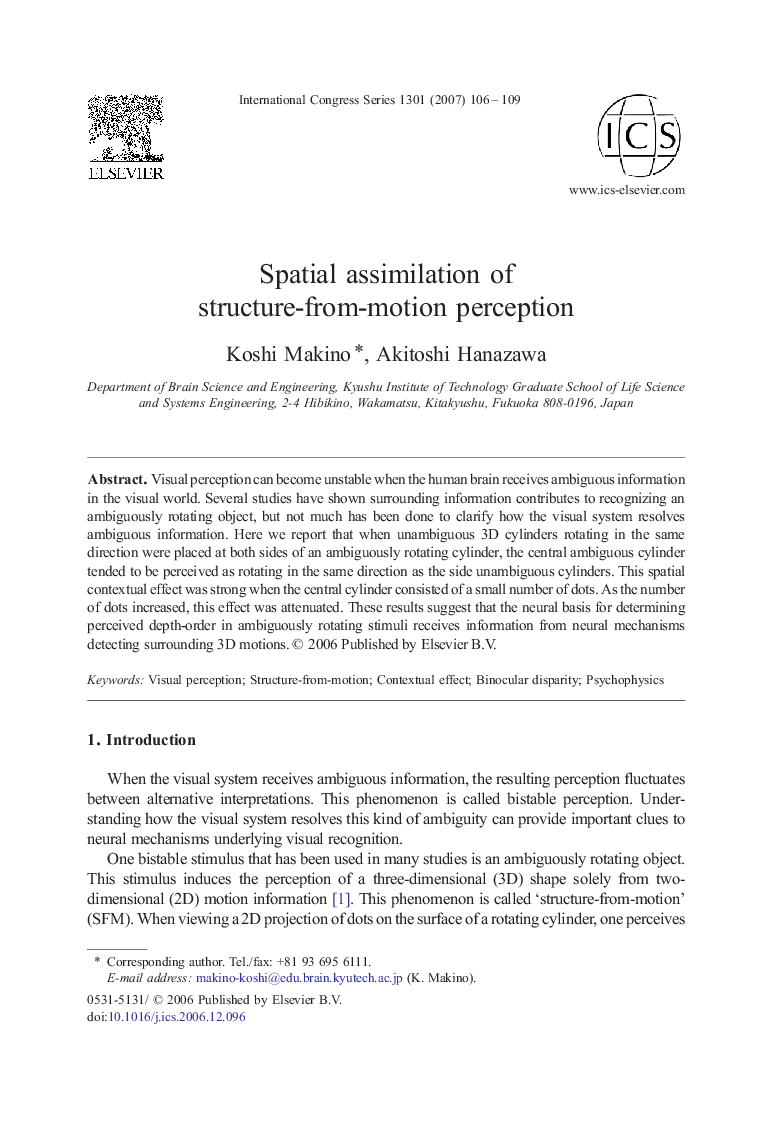| Article ID | Journal | Published Year | Pages | File Type |
|---|---|---|---|---|
| 2576493 | International Congress Series | 2007 | 4 Pages |
Visual perception can become unstable when the human brain receives ambiguous information in the visual world. Several studies have shown surrounding information contributes to recognizing an ambiguously rotating object, but not much has been done to clarify how the visual system resolves ambiguous information. Here we report that when unambiguous 3D cylinders rotating in the same direction were placed at both sides of an ambiguously rotating cylinder, the central ambiguous cylinder tended to be perceived as rotating in the same direction as the side unambiguous cylinders. This spatial contextual effect was strong when the central cylinder consisted of a small number of dots. As the number of dots increased, this effect was attenuated. These results suggest that the neural basis for determining perceived depth-order in ambiguously rotating stimuli receives information from neural mechanisms detecting surrounding 3D motions.
